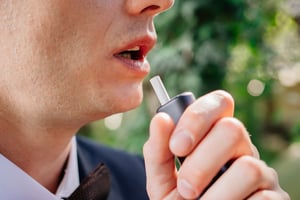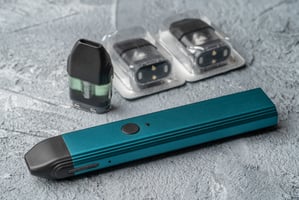Heated tobacco products (HTPs) are continuing to grow in popularity globally. The market’s worldwide value grew by $3.7 billion from 2022 to 2023, with Euromonitor International expecting it to hit...
Developing heated tobacco products for a smoke-free future
Nicotine
.jpg)
May 3, 2024 | Published by Broughton
Nicotine
For decades, the primary way to consume nicotine was to release it by burning and smoking tobacco. Now, heated tobacco products (HTPs) offer a similar experience to combustible cigarettes, but can help reduce exposure to potentially harmful toxicants. Here we discuss how HTP category innovators can create heated tobacco products that bring us closer to a smoke-free future.
Due to their reduced-risk profile and similarity in experience to smoking combustible cigarettes, interest in bringing heat-not-burn tobacco products to market is growing. Tobacco Intelligence estimates the global heated tobacco product market size was $28 billion in 2023 — having grown by a 24 percent compound growth rate since 2019 — and is forecast to reach over $30 billion this year. To bring HTPs to market efficiently, manufacturers must ensure their product complies with regulatory standards and safety guidance, while appealing to adult smokers.
To streamline the design and regulatory application process for new heated tobacco products as well as free up internal capacity, it can be beneficial to work with a partner like Broughton that offers a fully integrated service covering product development, extractables and leachables, testing and characterisation, toxicology, stability studies, and regulatory consultancy.
Broughton, recognising the potential of HTPs in tobacco harm reduction, has established a state-of-the-art HTP testing facility, from which it provides comprehensive services to assess the safety and performance of HTPs. This helps ensure compliance with stringent regulatory standards such as the Premarket Tobacco Application (PMTA), Tobacco Product Directive (TPD), and Tobacco and Related Products Regulations (TRPR).
.png?width=1000&height=250&name=Marketing%20Community%20(1).png)
Evaluating your HTP
When evaluating a HTP, it is important to analyse product design, test aerosol chemistry, and perform a toxicological assessment. Product design is important in achieving an appropriate yield, cloud, and aerosol, and iterative testing can help ensure optimal design. The product design will vary based on the type of HTP, which can be electrically, carbon or aerosol-heated. Heating mechanisms can comprise of a either convection or induction heating and may involve a heat-blade system or use external heating source. Broughton’s experienced engineers can advise at every step of product design to help ensure a safe, appealing, and compliant product.
Broughton can test a HTP for a specific suite of harmful and potentially harmful constituents (HPHCs), based on the PMI-58 and regulatory-required analytes to ensure there are no major toxicological concerns. We will also conduct paper-based toxicology assessments to confirm the absence of any other ingredients or materials of high concern.
For manufacturers seeking comprehensive aerosol testing, our validated methods cover a spectrum of analytes essential for assessing product safety and efficacy. Our suite of testing methods align with industry best practices and international guidelines, and our method development team can craft tailored solutions if required.
Broughton’s experienced team is highly skilled in developing and validating analytical methods to meet global regulatory requirements across a range of next-generation nicotine products. We have supported clients with scientific and regulatory services for several successful PMTA and TPD/TRPR, applications for a wide range of next-generation products. Our in-house laboratory testing facilities are GMP compliant and ISO/IEC 17025 accredited.
Looking to bring a heated tobacco product to market efficiently? Our experienced team can help you innovate by supporting with your testing, toxicology, and regulatory approval processes. Read more in our HTP Guide.


